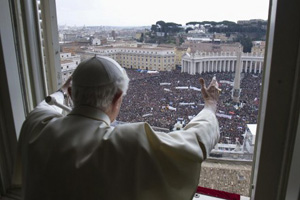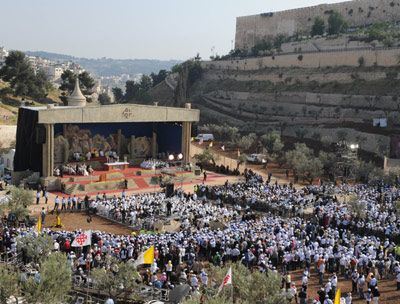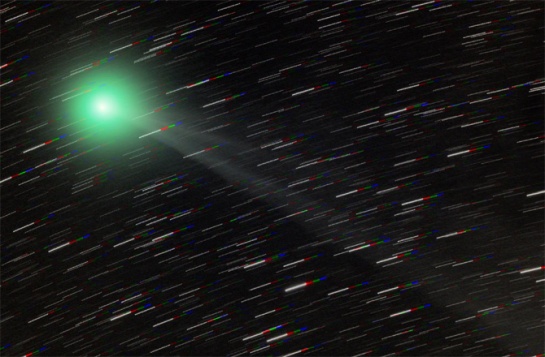It is very interesting to read the last angelus of Pope Benedict XVI. He says that the Lord is calling him to climb the mount (see text of angelus further down).
Has Pope Benedict XVI been called by the Lord as Jesus was called in the Garden of Gethsemane, the garden of olives? If this is the case, no wonder St Malachy’s motto of Benedict XVI is De Gloria Olivae.
Dear brothers and sisters. During the service on the second Lent Sunday, the Gospel of the Transfiguration of the Lord is always presented.
Luke, the evangelist, has highlighted the fact that Jesus transfigured while he prayed. His is a deep, profound experience of relationship with the Father during a sort of spiritual retreat that Jesus lives on a high mount accompanied by Peter, James and John, the three disciples who were always present during the moments of the divine manifestation of the Master.
The Lord, who not long ago had proclaimed his death and resurrection, offers the disciples an anticipation of his glory.
And in both the transfiguration and the baptism, the voice of the heavenly Father echoes: “This is my son, the chosen one, listen to him!”
The presence of Moses and Elias later on, representing the laws and the prophets of the ancient covenant, is far more important: All the story of the covenant is oriented towards Him, the Christ, who fulfills a new exodus not towards the promised land as during the times of Moses but towards Heaven.
St. Peter’s intervention: “Master, it is beautiful for us to be here” represents the impossible attempt to stop such mystical experience.
St. Augustine has commented: “St. Peter… on the Mount… Christ’s only food was the soul. Because he must have descended to return to exhaustion and pain, while above, he was filled with feelings of sacred love towards God, which thus inspired him to a sacred path.”
Pondering over this fragment of the Gospel, we can draw a very important lesson: First of all, the supremacy of prayer, without which all the apostolate endeavors, and that of charity, will be reduced to activism.
During Lent, let us learn to give the right time to prayer, both personal and community prayer, which breathes air into our spiritual life.
However, praying does not mean isolating oneself from the world and its contradictions, as St. Peter would have liked to have done on Mount Tabor, but prayer leads us back to the path, to action.
Christian existence — I have written in the Message for this Lent — means to continuously climb up the mount for our encounter with God, so that afterward we can descend again filled with his love and strength to serve our brothers and sisters with the very love of God.
Dear Brothers and sisters, this Word of God I feel in a particular way towards me, at this moment in my life.
The Lord is calling me to “climb the mount,” and to devote myself to meditation, reflection and prayer.
However, this does not mean abandoning the Church, but rather, if God has requested this of me, it is so that I can continue to serve the Church with the same dedication and the same love with which I have done up until now, but in a way adapted to my age and my strength.
Let us invoke Virgin Mary’s intercession: Let her guide all of you to follow the Lord Jesus always, in prayer as well as in laborious charity.





